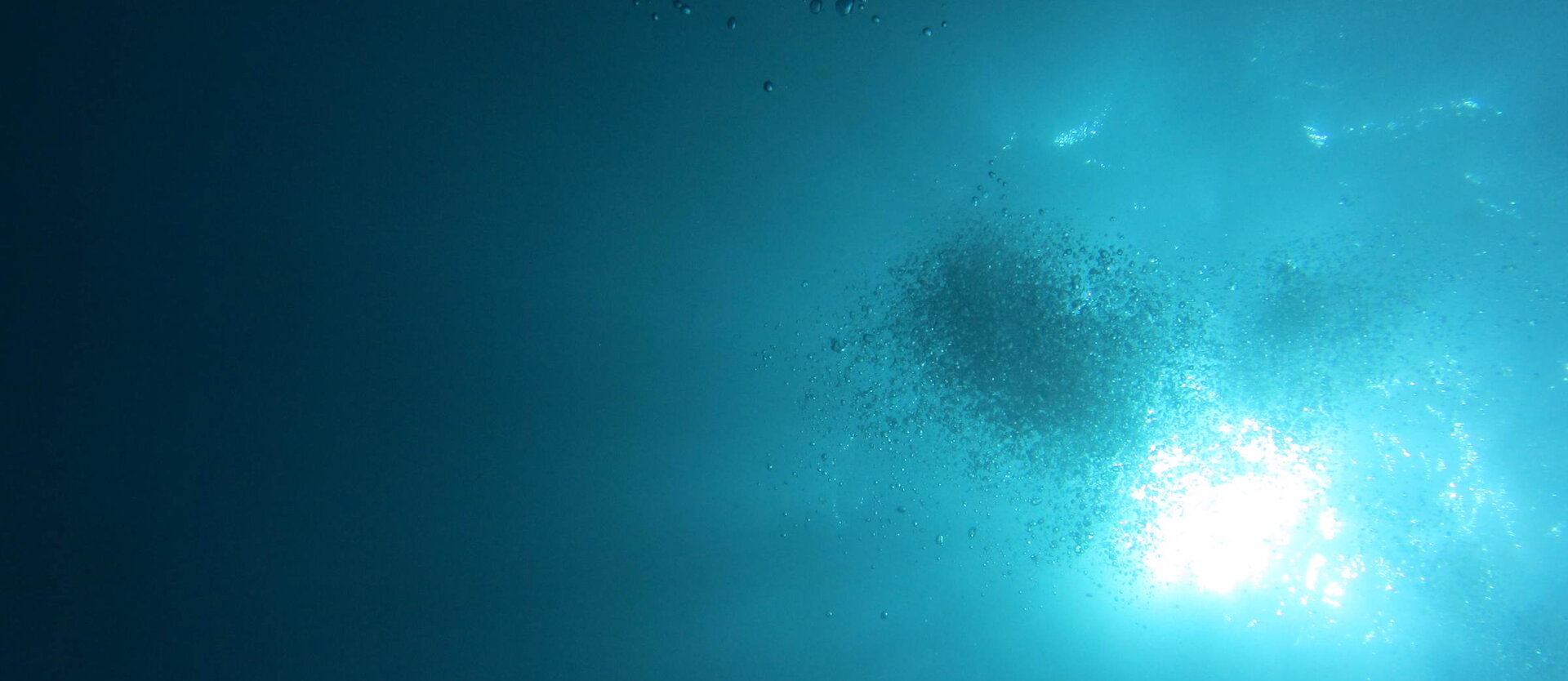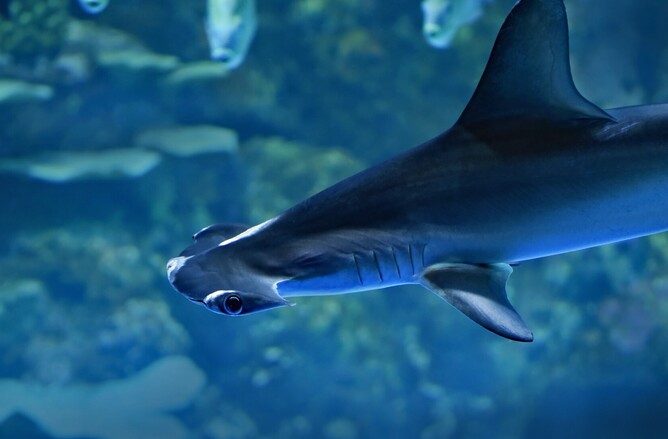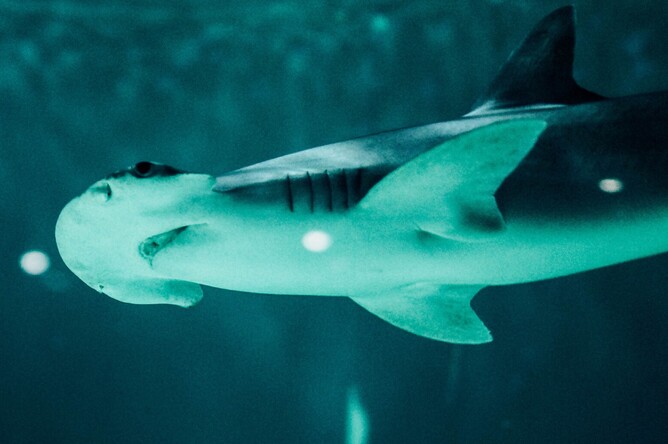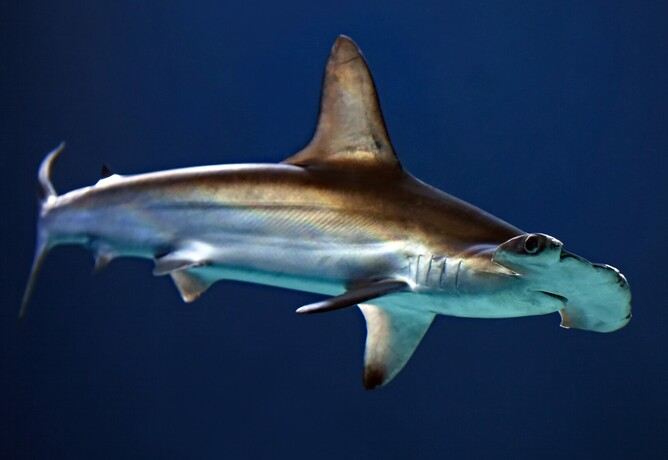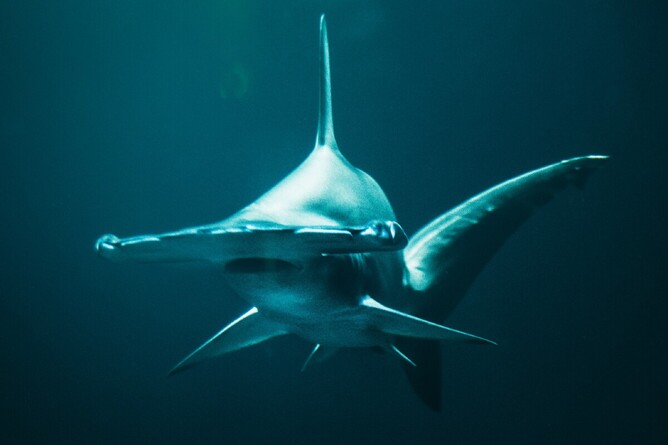This is the first in our series of 'I want to know about...' blogs.
We're looking at hammerhead sharks, and why specifically they've evolved so differently to every other species of shark.
Hammerheads - a distinctive shark species
Hammerhead sharks are a strong apex predator, perhaps the most distinctive shark species in the sea. They're universally recognised due to their laterally shaped heads which is also known as their cephalofoil.
As sharks have been on this planet for approximately 450 million years, you’d think that others would have evolved similarly during that time. So why are there so few sharks with such features?
Hammerhead sharks - some facts
The ancestor of the hammerheads we know today probably lived around 20 million years ago. Scientists are able to know this from DNA studies made from their teeth.
A shark’s skeleton is made entirely of cartilage and this makes them very streamline and aids with hunting. As sharks do not have mineralised bones, fossil records are scarce; however their teeth do survive to tell the tale.
There are about 9 species of shark identifiable by the famous ‘hammer’ shaped head, all a part of the Sphyrnidae family. These are:
- Great hammerhead
- Scalloped hammerhead
- Smooth hammerhead
- Winghead shark
- Bonnethead
- Scalloped bonnethead
- Scoophead
- Smalleye hammerhead
- Whitefin hammerhead
Whilst most of them differ greatly in size and colour, making them more distinguishable, people tend to confuse the scalloped, smooth and great hammerhead.
How can you distinguish between hammerheads?
If it's in your bucket list to dive with hammerheads - as we’re sure it is for many - there’s a few easy ways to tell them apart:
- Size
- Cephalofoil
- Social behaviour
Size of a great hammerhead
The first thing to look for is size - it isn’t called the great hammerhead for nothing! The great is the largest of all hammerheads, regularly growing to about 13 feet long. The longest great hammerhead on record was 20 feet long!
Its pectoral and anal fins are also noticeably larger, which unfortunately makes them a target for those hunting shark fins.
Different shapes of the cephalofoil
The great hammerhead’s is much straighter - their heads much more resemble a T shape with only one notch in the centre. However, a scalloped hammerhead will have many notches along their head (the most pronounced being in the middle), making it much rounder - commonly described as resembling a shovel rather than a T. The smooth hammerhead has a slight curve to the edges of it’s head, but it does not have the notch in the middle.
Social behaviour
Lastly, whilst not a physical difference, a hammerhead's social behaviour will aid in identifying them.
The great hammerhead is a mostly solitary creature, they do not travel in schools. However, they are often seen with other fish - yellow jacks accompany them and rub themselves against the shark; likely to rid themselves of parasites and schools of pilot fish.
Scalloped hammerheads are widely known for their massive schooling - regularly in the hundreds. This can aid with hunting larger or more difficult prey. It is theorised that such large numbers of both female and male sharks can also protect females in the group since many females are bombarded when alone. Whilst they swim in the schools, it has been observed that females decide which males are allowed near them and which are not. Juveniles tend to stay towards the top of the group, whereas you’ll find the adults much deeper into the ocean.
This breathtaking hammerhead schooling phenomenon has created a lot of tourism over the years, and there are a few places you can go to see it. The best destinations to seek out are:
- The Galapagos
- The Bahamas
- French Polynesia
- Costa Rica
Smooth hammerheads tend to flit between social and solitary. When social, they will usually form much smaller schools than scalloped hammerheads. However, they may reach the same numbers during their annual migration.
Why do hammerheads look the way they do?
Most scientists believe that they have evolved in the way that they have to aid their hunting techniques. Their anatomy and cartilage skeleton allows for high amounts of dexterity when swimming and hunting. The eyes are located at the tips of the head, which gives them 360° vision with only one blindspot - right between the eyes.
This means hammerhead sharks can see almost everywhere at once, and allows them to escape attack in infancy and target specific prey.
The hammerhead shark's head as a hunting aid
A hammerhead shark's unique head shape is not just an aid to sight. All sharks are equipped with electroreceptors called the ampullae of Lorenzini. These are the small dots concentrated around the snout. This network of pores is filled with a jelly-like substance that detects electric and magnetic fields within the water, as well as temperature gradients.
Hammerheads, with their uniquely shaped heads, can use the ampullae to sweep the ocean floor more effectively to help detect prey. This works especially well on the ocean floor, as one of their primary food sources are rays.
Another function of the cephalofoil is unique to the hammerhead and prey handling.
There are multiple accounts of hammerheads using their wide heads to first knock their prey (usually rays) with a hard, disorientating blow to the seabed, and then pin their prey to the ocean floor.
With their high levels of dexterity, they then pivot to take 2 bites out of the ray’s pectoral fin discs on either side. This will effectively immobilise the ray and make it impossible to escape. The shark will then shake the ray in its jaws to sever it into bite-sized chunks.
A similar hunting tactic has also been witnessed. The hammerhead shark will first take a bite out of a ray to incapacitate it. Then, it will pin the ray and pivot to be able to move the ray into its jaws - head first.
It is also theorised that the head shape aids the sense of smell. A hammerhead shark's nostrils are located beneath the eyes at the ends of the head. This allows for a broad sense of smell from all directions. Off the coast of Florida, it has been noted that hammerheads are usually the first shark species to reach the baited shark lines and scientists wonder if this is attributed to a greater sense of smell.
And finally...a great way to conserve energy
In a 2016 study, it was noticed that hammerheads regularly spend 90% of their time doing something called ‘rolled swimming’. This is when they use their pectoral fin to orientate their bodies and roll onto their sides. The cephalofoil allows for streamline swimming and thereby conserves energy. Working as a hydrofoil, it decreases overall drag and allows for sharp and quick movements through the water- vital for hunting and escaping predators when juvenile.
Energy expenditure and approximately 10% of drag is reduced whilst swimming.
Enjoy this article and want to know more about Dive Bunnies?
Are you a new or novice diver and want to get more involved with Dive Bunnies? Why not join our Facebook Group and make some new friends - we would love to hear from you!
